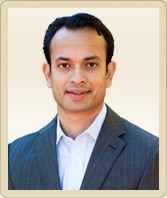Anti-reflux surgery, also known as Nissen Fundoplication surgery is a procedure to treat gastro esophageal reflux disease (GERD).
Acid reflux, also called gastro-esophageal reflux disease (GERD), is a condition where the stomach contents (food or liquid) rise up from the stomach into the oesophagus, a tube that carries food from the mouth to the stomach.
Normally the stomach contents do not enter the oesophagus due to constricted LES. But in patients with acid reflux stomach content travels back into the oesophagus because of a weak or relaxed lower esophageal sphincter (LES). Lower esophageal sphincter is a ring of muscle fibers that surrounds the lower-most end of the oesophagus where it joins the stomach. LES acts like a valve between the oesophagus and stomach preventing food from moving backward into the oesophagus.
Heartburn is usually the main symptom; a burning-type pain in the lower part of the mid-chest, behind the breast bone. Other symptoms such as a bitter or sour taste in the mouth, trouble in swallowing, nausea, dry cough or wheezing, regurgitation of food (bringing food back up into the mouth), hoarseness or change in voice, and chest pain may be experienced.
The exact cause of what weakens or relaxes the LES in GERD is not known, however certain factors including obesity, smoking, pregnancy, and possibly alcohol may contribute to GERD. Common foods that can worsen reflux symptoms include spicy foods, onions, chocolates, caffeine containing drinks, mint flavorings, tomato based foods and citrus fruits. Certain medications can also worsen the reflux.
Antacids are over-the-counter medicines that provide temporarily relief to heartburn or indigestion by neutralizing acid in the stomach. Other medications such as proton pump inhibitors and H2 antagonists may be prescribed to reduce the production of acid in the stomach.
Anti-reflux Surgery may be an option for patients whose symptoms do not go away with the medications. Nissen’s fundoplication is a surgical procedure in which the upper part of the stomach is wrapped around the end of your oesophagus and esophageal sphincter, where it is sutured into place. This surgery strengthens the sphincter and helps prevent stomach acid and food from flowing back into oesophagus.
Surgical Procedure
Nissen Fundoplication is performed as laparoscopic or keyhole surgery with the patient under general anesthesia.
The surgeon uses a needle to inject a harmless gas into the abdominal cavity near the belly button to expand the viewing area of the abdomen giving the surgeon a clear view and room to work. The surgeon makes a small incision in the upper abdomen and inserts a tube called a trocar through which the laparoscope is introduced into the abdomen. Additional small incisions may be made for a variety of surgical instruments to be used during the procedure.
With the images from the laparoscope as a guide, your surgeon wraps the upper part of the stomach, the fundus, around the lower oesophagus to create a valve, suturing it in place.
The hole in the diaphragm through which the oesophagus passes is then tightened with sutures. The laparoscope and other instruments are removed and the gas released.
The tiny incisions are closed and covered with small bandages.
Laparoscopy is much less traumatic to the muscles and soft tissues than the traditional method of surgically opening the abdomen with long incisions (open techniques).
Specific complications for Nissen Fundoplication include:
- Post-operative fever and infection
- Surgical injury to blood vessels
- Surgical injury to stomach or oesophagus
- Swallowing difficulties
- Gas embolism – If gas is used to distend the abdominal cavity for better viewing there is a risk of gas embolism or gas bubbles in the bloodstream.
- Adhesions – Extensive scar tissue formation can form in the surgical area.

